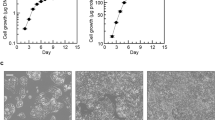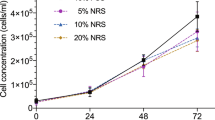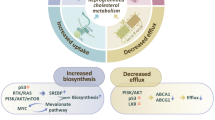Abstract
The metabolism of cholesterol has been investigated in tumour cells, ascitic fluid and blood serum during the growth of an ascites hepatoma (Yoshida AH-130) in the rat. High rates of cholesterol synthesis and elevated free and esterified cholesterol content were observed in tumour cells. During tumour growth, the host animals progressively developed marked changes in the level and distribution of serum cholesterol consisting in an increase of total cholesterol and of a marked reduction of HDL cholesterol (HDL2 subfraction in particular). In agreement with previous observations, these findings indicate that a consistent pattern of altered cholesterol homeostasis develops in relation to normal or neoplastic tissue growth. High synthetic rates and intracellular accumulation of cholesterol are observed in the proliferating cells. Moreover, blood serum cholesterol decreases in the HDL fraction while it increases in LDLs, suggesting that during proliferative processes cholesterol fluxes between tissues and serum lipoproteins are markedly perturbed.
This is a preview of subscription content, access via your institution
Access options
Subscribe to this journal
Receive 24 print issues and online access
$259.00 per year
only $10.79 per issue
Buy this article
- Purchase on Springer Link
- Instant access to full article PDF
Prices may be subject to local taxes which are calculated during checkout
Similar content being viewed by others
Author information
Authors and Affiliations
Rights and permissions
About this article
Cite this article
Dessí, S., Batetta, B., Anchisi, C. et al. Cholesterol metabolism during the growth of a rat ascites hepatoma (Yoshida AH-130). Br J Cancer 66, 787–793 (1992). https://doi.org/10.1038/bjc.1992.361
Issue Date:
DOI: https://doi.org/10.1038/bjc.1992.361
This article is cited by
-
Ferredoxin reductase and p53 are necessary for lipid homeostasis and tumor suppression through the ABCA1–SREBP pathway
Oncogene (2022)
-
Hypermethylation of the TGF-β target, ABCA1 is associated with poor prognosis in ovarian cancer patients
Clinical Epigenetics (2015)
-
Low level of high-density lipoprotein cholesterol correlates with poor prognosis in extranodal natural killer/T cell lymphoma
Tumor Biology (2014)
-
Restorative effect of Dendrophthoe falcata (L.f.) Ettingsh on lipids, lipoproteins, and lipid-metabolizing enzymes in DMBA-induced mammary gland carcinogenesis in Wistar female rats
Comparative Clinical Pathology (2014)
-
Protective effect of Shemamruthaa on lipids anomalies in 7,12-dimethylbenz[a]anthracene (DMBA)-induced mammary carcinoma-bearing rats
Medicinal Chemistry Research (2014)



